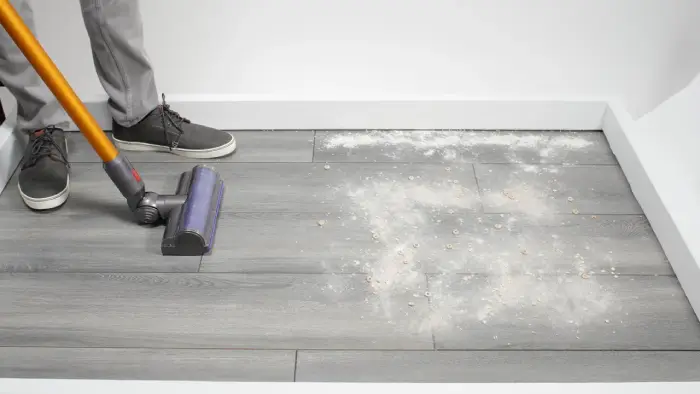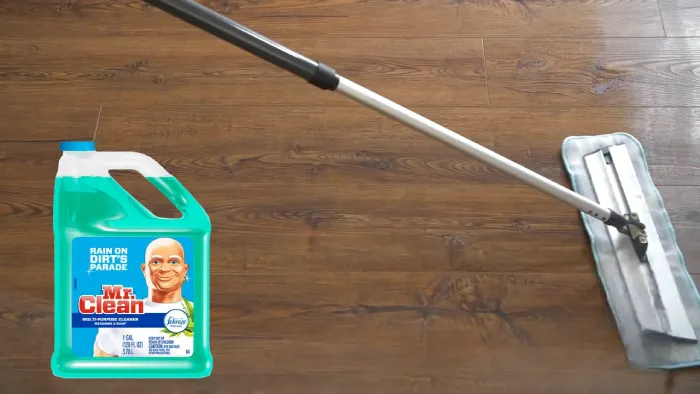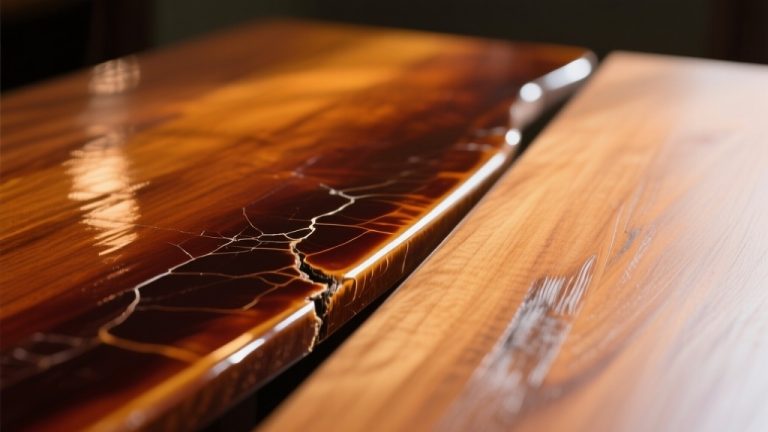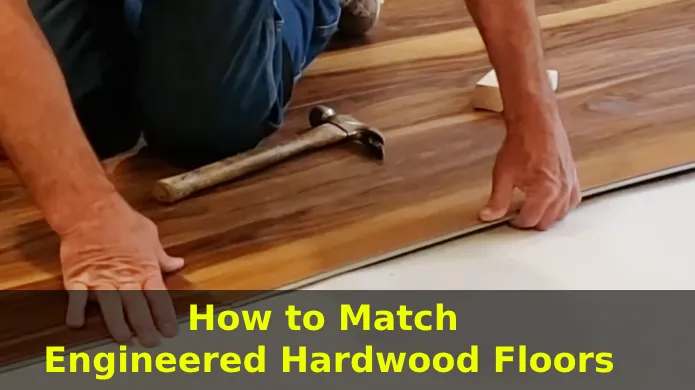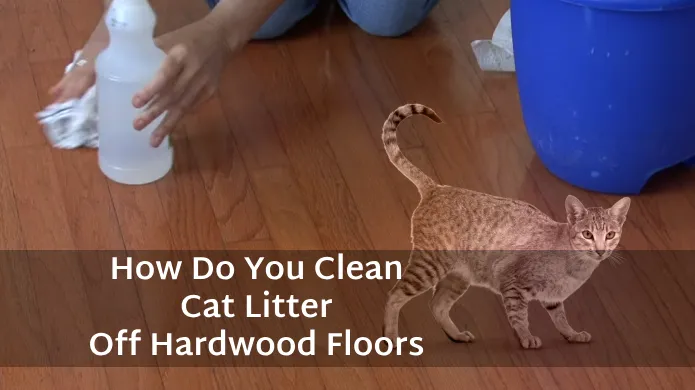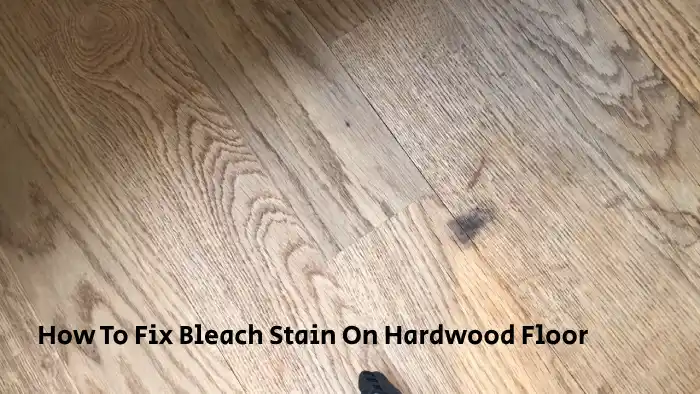Does Dyson Scratch Hardwood Floors: 4 Factors to Consider
Scratchless cleaning is a top priority for anyone with hardwood floors. When choosing a vacuum cleaner, concerns about potential scratches can make the decision even more crucial.
One popular brand that has garnered attention is Dyson, known for its powerful suction and innovative design. However, there have been discussions surrounding whether Dyson vacuums are prone to scratching hardwood floors.
Dyson vacuums can potentially scratch hardwood floors if not used properly. Certain Dyson vacuums, like the DC25 and DC28 Animal models, have been known to scratch hardwood floors.
The wheels on the back of the vacuum can leave scuff marks, and the silver paint from the vacuum’s bottom may scratch black stained wood floors.
To address this, Dyson has introduced vacuum models specifically designed for hardwood floors, such as the Dyson Omni-Glide and Dyson Micro, which feature soft roller cleaner heads and specialized attachments.
We’ll discuss the circumstances under which scratches can happen and how to use your Dyson vacuum safely on hardwood floors to prevent scratching.
Under What Circumstances Can Dyson Vacuums Potentially Scratch Hardwood Floors?
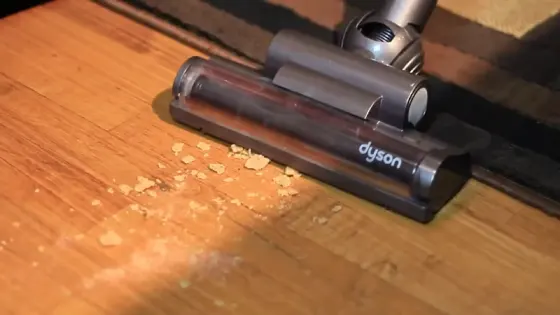
If you’re concerned about whether your Dyson vacuum might scratch your hardwood floors, it’s important to understand the potential causes of this issue. Here’s a quick overview:
1. Improper use of attachments
2. Worn-out or damaged parts
3. Lack of proper maintenance
4. User error
Let’s get into the details.
1. Improper Use of Attachments
Using the wrong attachment on your Dyson vacuum can potentially scratch your hardwood floors.
This is because attachments designed for carpets or other rough surfaces can have harsh bristles that can damage the delicate surface of hardwood. It’s important to use attachments specifically designed for hardwood floors to avoid any scratches or damage.
Thankfully, Dyson offers specific attachments designed to be gentle on hardwood surfaces. The soft roller cleaner head and Dyson Fluffy head are excellent options for cleaning hardwood floors without causing any damage.
These attachments are specifically designed with soft bristles that glide over hardwood surfaces without scratching or leaving any marks.
2. Worn-Out or Damaged Parts
As the wheels on your vacuum age, they may accumulate debris or develop rough edges that could potentially damage your hardwood floors.
It’s important to regularly check the condition of your vacuum’s wheels and replace them when necessary. Here are three signs that your vacuum wheels may be worn-out or damaged:
- Your vacuum is making unusual noises or sounds while in use.
- The vacuum is difficult to maneuver or move across the floor.
- You notice scratches or marks on your hardwood floors after vacuuming.
If you notice any of these signs, it’s time to replace the wheels on your vacuum. Using a vacuum with worn-out or damaged wheels can not only cause damage to your floors but also reduce the effectiveness of the vacuum.
3. Lack of Proper Maintenance
Proper vacuum maintenance is crucial to prevent potential damage to your beautiful hardwood floors. Lack of proper maintenance can lead to debris and buildup on the vacuum’s bottom surface, resulting in scratches and damage to your flooring.
To ensure your Dyson vacuum does not scratch your hardwood floors, it is important to inspect and clean it regularly.
One way to maintain your vacuum is by cleaning the brush roll regularly. The brush roll can easily accumulate hair, pet fur, and other debris that can scratch your hardwood floors.
You can use a pair of scissors to cut off any hair or fur that has wrapped around the brush roll. Additionally, it is important to clean the dustbin after each use and replace the filter when needed.
A dirty filter can reduce the suction power of the vacuum, making it less effective in picking up debris.
4. User Error
If you thought neglecting to maintain your Dyson vacuum was the only thing that could damage your hardwood floors, think again. User error is also a major contributor to scratches on hardwood floors caused by a Dyson vacuum.
If you’re not careful with the way you move the vacuum across the floor, you could end up with unsightly scratches that can be difficult to remove.
One of the most common user errors that can cause scratches is applying too much pressure while vacuuming or moving the vacuum too quickly across the floor. This creates friction between the vacuum and the floor, leading to scratches.
Additionally, dragging the vacuum instead of lifting it slightly when transitioning between areas or turning can also lead to scratches from the wheels or bottom of the vacuum.
To avoid these issues, it’s important to be mindful of your movements and to take care when using your Dyson vacuum on hardwood floors.
How to Use Dyson Vacuums Safely on Hardwood Floors to Prevent Scratching?

To safely vacuum hardwood floors with your Dyson vacuum, there are a few key things to keep in mind.
1. Choose the Appropriate Attachment
Using the right attachment is crucial for preserving the beauty of your hardwood floors, so opt for the soft roller cleaner head or Dyson Fluffy head to avoid scratches and damage.
These attachments are specifically designed for hardwood floors and have soft bristles or rollers that are gentle on wood surfaces.
They are ideal for picking up dust, dirt, and debris without leaving any marks or scratches on your floors. When using the Dyson Fluffy head or soft roller cleaner head, make sure to adjust the vacuum height to the appropriate level.
This will ensure that the bristles or rollers are in contact with the floor, but not pressing too hard.
Additionally, avoid using the vacuum on wet floors, as water can damage hardwood surfaces. With the right attachment and proper use, you can keep your hardwood floors looking beautiful and scratch-free with your Dyson vacuum.
2. Regularly Inspect and Maintain the Vacuum
Regularly checking for worn-out or damaged parts of your vacuum, such as the wheels and bottom, will ensure a smooth and effortless cleaning experience while keeping your floors looking spotless. Here are some things to keep in mind when inspecting and maintaining your Dyson vacuum:
- Check the wheels for any signs of wear and tear, such as cracks or missing pieces. If you notice any damage, replace the wheels immediately to prevent scratches on your hardwood floors.
- Inspect the bottom of the vacuum for any debris or foreign objects that may have gotten stuck. Clear any clogs or blockages to ensure maximum suction and prevent damage to your floors.
- Clean the filters regularly to prevent dust and debris from building up and potentially scratching your floors. Follow the manufacturer’s instructions for cleaning the filters.
- Check the brush roll for any tangled hair or debris. Use scissors or a brush to remove any tangles and prevent damage to your floors.
- Store your vacuum properly when not in use to prevent damage to the wheels and other parts. Make sure it’s dry and cool, away from direct sunlight.
3. Lift Instead of Dragging
While you might think dragging your vacuum across the floor is the easiest way to clean, lifting it slightly can actually prevent those pesky scratches from ruining your pristine hardwood floors.
When you drag your vacuum, the wheels and bottom of the machine can potentially scratch the floor. By lifting the vacuum, you not only avoid these scratches but you also give yourself a better angle to reach tight spaces and corners.
To lift the vacuum, tilt it slightly and move it forward. This technique not only protects your floors but also allows you to maneuver the vacuum around obstacles easily.
It may take some practice to get used to lifting the vacuum, but it’s a small adjustment that can make a big difference in the longevity of your hardwood floors.
4. Use Gentle Movements
To prevent any damage, make sure you’re using gentle and slow movements when vacuuming your hardwood floors. It’s important to avoid applying excessive pressure or moving the vacuum too quickly.
Instead, use back-and-forth or side-to-side motions that are gentle and slow. This will prevent any friction from occurring, which can lead to scratches on your beautiful hardwood floors.
Additionally, it’s helpful to use a table to understand the different factors that can affect the potential for scratching your hardwood floors. Consider the following table:
| Factor | Impact on Scratching |
| Vacuum Speed | Faster vacuuming can lead to scratches |
| Vacuum Pressure | Applying too much pressure can cause scratches |
| Vacuum Type | Some vacuums are designed specifically for hardwood floors |
| Floor Finish | Different finishes can affect the likelihood of scratches |
| Cleaning Frequency | Cleaning too frequently or infrequently can increase the risk of scratches |
5. Remove Beater Bar Attachments
If you have a beater bar attachment on your Dyson vacuum, it’s recommended to remove it before vacuuming hardwood floors.
Beater bars can potentially scratch surfaces with their rotating bristles, which can be unsightly and hard to get rid of. Here are four steps to follow when removing the beater bar attachment:
- Turn off and unplug your Dyson vacuum before beginning the removal process.
- Locate the beater bar attachment and press the release button to detach it from the vacuum.
- Once detached, use a clean cloth to wipe down the beater bar attachment to remove any debris or hair that may have accumulated.
- Store the beater bar attachment in a safe place to avoid misplacing it.
6. Regular Maintenance of Hardwood Floors
Maintaining the beauty and longevity of your hardwood floors requires consistent care and attention. Regular maintenance is crucial to prevent scratches, dents, and other forms of damage.
To keep your hardwood floors looking their best, you should sweep or dust them regularly to remove dirt and debris. This will minimize the risk of scratching the floor when you vacuum.
In addition to sweeping and dusting, you should also clean your hardwood floors with a damp mop and a hardwood floor cleaner.
Avoid using harsh chemicals or abrasive cleaners, as they can damage the finish of your floor. Instead, use a gentle cleaner that’s specifically designed for hardwood floors.
How often should you vacuum hardwood floors?
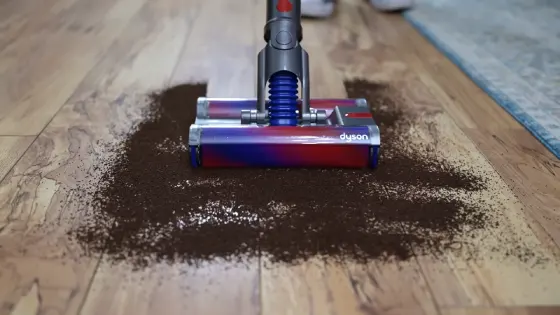
For optimal maintenance of hardwood floors, it is recommended to vacuum them at least once a week. This frequency helps to prevent the accumulation of dirt and grime that can cause damage over time.
The flat construction of hardwood floors and the sealant applied to most surfaces provide some protection against such debris.
However, regular vacuuming helps to ensure that these floors remain clean and free of abrasions, which can lead to unwanted repairs or replacements down the line. Therefore, to keep your hardwood floors in prime condition, make sure to vacuum them weekly.
Is there scratch-resistant hardwood flooring?
There are scratch-resistant hardwood flooring options available. While no hardwood floor is completely scratch-proof, some factors can make certain hardwood flooring choices more resistant to scratches.
For example, hardwood floors made of hickory are known for their hardness and durability, making them an excellent choice for high-traffic households. Additionally, the appearance and composition of a hardwood floor can also impact its overall scratch resistance.
By choosing a hardwood floor with a textured or distressed finish, surface scratches will be less noticeable, resulting in a lower overall impact on the floor’s appearance.
Keep Your Hardwood Floors Looking Beautiful With a Dyson Vacuum
So there you have it, the truth about whether or not Dyson vacuums scratch hardwood floors. While the cleaner can cause damage, it’s typically only in extreme circumstances.
Following a few simple guidelines, you can safely use your Dyson vacuum on hardwood floors without fear of scratching. Adjust the suction power to a lower setting and use the appropriate attachment for hardwood floors. And remember to vacuum regularly to keep your floors looking their best.
So don’t let the fear of scratching hold you back from using your Dyson vacuum on hardwood floors. With the right precautions, you can keep your floors looking beautiful for a long time.

